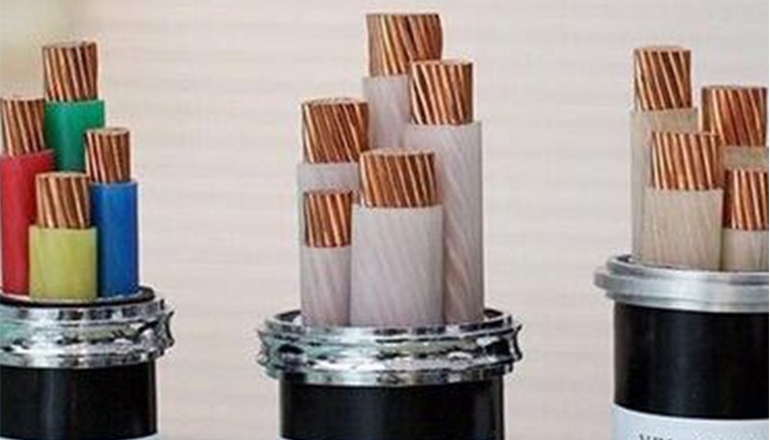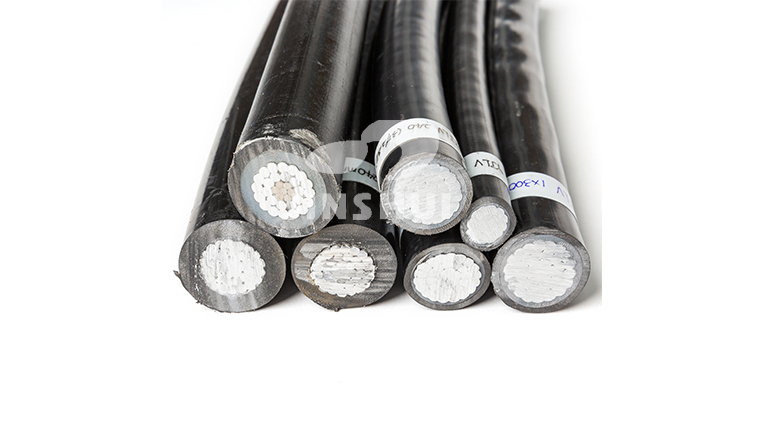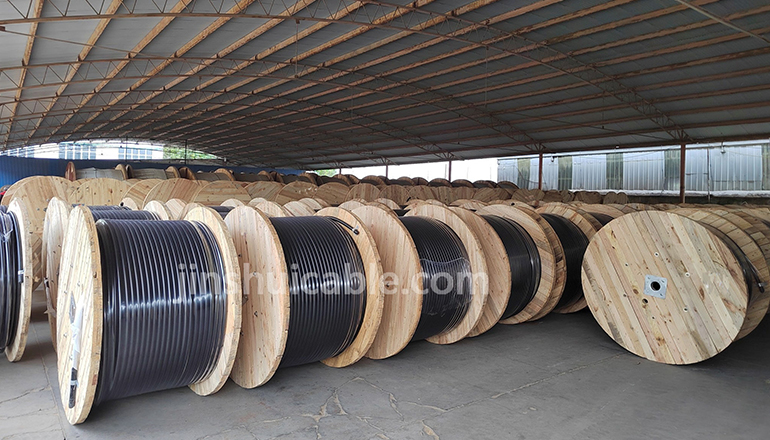- Offices Time:24 Hours Online
- Email:[email protected]
- WhatsApp:+8618339938759
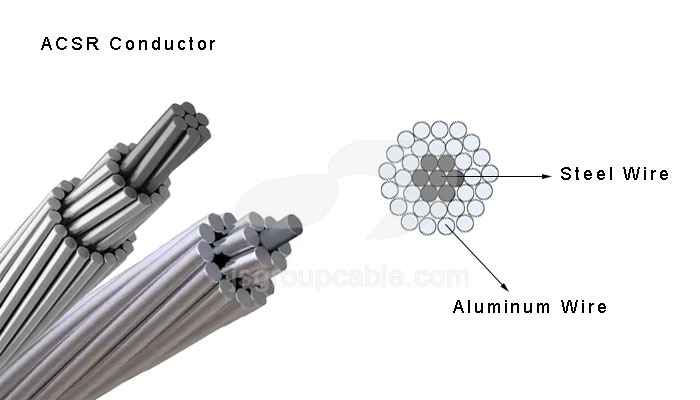
Posted on February 23, 2023
The structure and characteristics of ACSR conductor
ACSR Conductor is a type of electrical conductor used for transmitting power over long distances. It is composed of a central steel core surrounded by one or more layers of aluminum wires.ACSR conductor is an important component of many electrical transmission systems, providing a cost-effective and reliable way to transport large amounts of power over long distances.
The structure of ACSR conductor
The steel core provides the mechanical strength and durability needed to support the weight of the conductor and resist the tensile forces that occur during installation and operation. The aluminum wires, which are typically made from a high-purity aluminum alloy, provide the electrical conductivity needed for transmitting power.

The aluminum wires are twisted around the steel core in a helical pattern, which helps to distribute the mechanical stress evenly and prevent the aluminum wires from sliding around the steel core. The number of aluminum wires and the diameter of the steel core and aluminum wires can vary depending on the specific application and the amount of power that needs to be transmitted.
In addition to the steel core and aluminum wires, ACSR conductor may also have a coating or layer of insulation to protect against environmental factors such as moisture, heat, and UV radiation. This insulation layer can be made from various materials, such as polyethylene, polypropylene, or cross-linked polyethylene, depending on the specific requirements of the application.
The overall structure of an ACSR conductor is designed to balance the need for mechanical strength, electrical conductivity, and environmental protection. The steel core provides the necessary strength and durability, while the aluminum wires offer excellent electrical conductivity. The helical twisting of the wires helps distribute mechanical stress and prevent wire slippage.
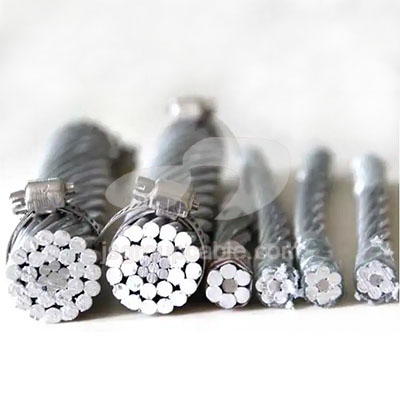
ACSR conductor are often used in high-voltage transmission lines because of their high strength-to-weight ratio and good electrical conductivity. They are also relatively inexpensive compared to other types of conductors and can be installed using standard equipment and techniques.
ACSR conductor size
ACSR (Aluminum Conductor Steel Reinforced) is a type of electrical conductor used in power transmission and distribution systems. ACSR conductors are available in a range of sizes, from small conductors used for distribution lines to large conductors used for high-voltage transmission lines.
The size of an ACSR conductor is typically specified by its cross-sectional area in square millimeters (mm²) or square inches (in²). For example, a common size for a transmission line is 402 mm².
The diameter of an ACSR conductor depends on the specific construction of the conductor, which typically includes a core of steel wires surrounded by one or more layers of aluminum wires. The overall diameter of the conductor is also influenced by the number and size of the individual wires, as well as the spacing between the wires.
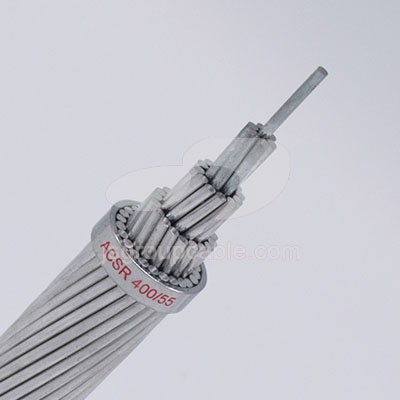
The choice of ACSR conductor size depends on a number of factors, including the length of the transmission line, the voltage level of the system, the ambient temperature, and the expected load. Designers and engineers use mathematical models and simulations to determine the appropriate conductor size for a given application, taking into account factors such as line losses, voltage drop, and thermal performance.
Characteristics of ACSR conductor
ACSR conductor have a number of characteristics that make them well-suited for high-voltage transmission lines. Some of the key characteristics of ACSR conductors include:
1.High strength-to-weight ratio
The steel core provides the necessary strength and durability to support the weight of the conductor and resist the mechanical stresses that occur during installation and operation. The aluminum wires, on the other hand, are lightweight and offer excellent electrical conductivity, resulting in a high strength-to-weight ratio.
2.Good electrical conductivity
The high-purity aluminum used in ACSR conductor provides excellent electrical conductivity, allowing for efficient transmission of power over long distances.
3.Low thermal expansion
ACSR conductor have a low coefficient of thermal expansion, which means they expand and contract less in response to changes in temperature. This helps to reduce stress on the conductor and minimize the risk of damage or failure.
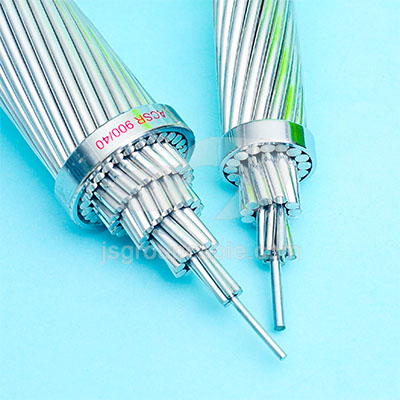
4.Good corrosion resistance
The aluminum wires in ACSR conductor are highly resistant to corrosion, which helps to prolong the life of the conductor and reduce the need for maintenance.
5.Cost-effective
ACSR conductor are generally less expensive than other types of conductors, making them a cost-effective option for high-voltage transmission lines.
6.Easy to install
ACSR conductor can be installed using standard equipment and techniques, which helps to reduce installation time and costs.
7.Ability to handle high temperatures
ACSR conductor have the ability to handle high temperatures without experiencing significant loss of electrical conductivity or strength. This is important in areas where temperatures can reach extreme levels, such as desert regions or areas close to power plants.
8.Resistance to mechanical stress
The helical twisting of the aluminum wires around the steel core in ACSR conductor helps to distribute mechanical stress evenly along the length of the conductor. This reduces the risk of wire slippage or damage during installation or operation.
9.Long lifespan
ACSR conductor have a long lifespan, with some installations lasting up to 50 years or more. This is due to the combination of corrosion resistance, high strength-to-weight ratio, and low thermal expansion, which help to reduce the risk of damage or failure over time.
10.Versatility
ACSR conductor can be customized to meet the specific requirements of different applications. The number and size of the aluminum wires can be adjusted to achieve the desired level of electrical conductivity, while the diameter of the steel core can be varied to provide the necessary strength.
Overall, the combination of strength, electrical conductivity, resistance to mechanical stress, and longevity make ACSR conductor a versatile and reliable option for high-voltage transmission lines. While other types of conductors may offer some advantages in certain situations, ACSR conductors are widely used around the world due to their combination of performance and cost-effectiveness.
- Previous:What is concentric cable?
- Next:What Is An Armored Cable?
Post categories
Most Popular Posts
-
The 135th China Canton Fair
March 20, 2024 -
What are the laying methods of copper core wires and cables?
January 9, 2024 -
What are the advantages of aluminum conductor cables?
December 14, 2023 -
Characteristics of high temperature wires and cables
December 7, 2023



